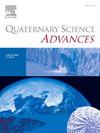Surficial geomorphic expressions along the Zanskar shear zone (ZSZ), NW Himalaya, India
IF 2.2
Q2 GEOGRAPHY, PHYSICAL
引用次数: 0
Abstract
There is substantial evidence of the dynamic interplay between surficial geomorphic processes and active tectonics in the Zanskar Shear Zone (ZSZ), northwest Himalaya, India. The ZSZ is a result of tectonic conversion with a SW–NE orientation that began in the Late Cretaceous and became stronger in the Early Miocene as a result of the collision of the Indian and Eurasian plates. Earlier studies have addressed its tectonic activity and metamorphic activation. However, the contribution of active tectonics to the geomorphic evolution of the region is less understood. Using the Advanced Spaceborne Thermal Emission and Reflection Radiometer (ASTER) Global Digital Elevation Model (GDEM) and Google Earth Imagery, various geomorphic features viz., alluvial fans, triangular facets, wineglass valleys, mountain fronts, knickpoints, and river terraces were identified and delineated. The study area was divided into three river sections viz., Suru, Doda, and Tsarap, running along or occasionally cutting across the strike of the ZSZ. The longitudinal river profiles suggest a relatively higher degree of tectonic activity along the Doda River, followed by the Tsarap and Suru Rivers. This spatial variation in the tectonic activity is also evident from the mountain front sinuosity index, wineglass valley index, triangular facets, and the morphometry of alluvial fans. Both the geomorphic features and morphometric parameters provide evidence of relative variation in the ZSZ activity along the Suru, Doda, and Tsarap River sections. Therefore, the present geomorphic evaluation suggests that the surficial (Quaternary) geomorphology documents the tectonic activity and its spatial variations along the ZSZ.
印度喜马拉雅西北部赞斯卡尔剪切带地表地貌特征
在印度喜马拉雅西北部的赞斯卡尔剪切带(Zanskar Shear Zone, ZSZ),地表地貌过程与活动构造之间存在动力学相互作用。ZSZ是晚白垩世开始的西南—东北向构造转换的结果,在早中新世由于印度板块与欧亚板块的碰撞而变得更加强烈。早期的研究主要针对其构造活动和变质作用。然而,活动构造对该地区地貌演化的贡献尚不清楚。利用先进星载热发射和反射辐射计(ASTER)全球数字高程模型(GDEM)和谷歌地球图像,识别和描绘了各种地貌特征,即冲积扇、三角形面、葡萄谷、山锋、裂缝点和河流阶地。研究区分为苏鲁河、渡达河和察拉普河三个河段,沿ZSZ走向流动或偶尔横穿ZSZ走向。纵向河流剖面显示沿多达河的构造活动程度相对较高,其次是察拉普河和苏鲁河。山前曲度指数、葡萄谷指数、三角切面和冲积扇形态也反映了构造活动的空间差异性。地貌特征和形态测量参数都提供了沿苏鲁河、多达河和察拉普河段ZSZ活动相对变化的证据。因此,目前的地貌评价表明,地表(第四纪)地貌记录了ZSZ的构造活动及其空间变化。
本文章由计算机程序翻译,如有差异,请以英文原文为准。
求助全文
约1分钟内获得全文
求助全文
来源期刊

Quaternary Science Advances
Earth and Planetary Sciences-Earth-Surface Processes
CiteScore
4.00
自引率
13.30%
发文量
16
审稿时长
61 days
 求助内容:
求助内容: 应助结果提醒方式:
应助结果提醒方式:


